Bird Management in Winter: What to Know
Jan 11, 2021The most well-known animal strategies for surviving the bleak winter months are to hibernate or to migrate. Most mammals choose hibernation; most birds go with migration. But there are exceptions. The Common Poorwill hibernates. Some bird species do neither. What happens to birds like chickadees, robins, and cardinals – and nuisance species like gulls, geese, and pigeons – who neither migrate nor hibernate? How do they cope with cold temperatures and a season of scarce food?
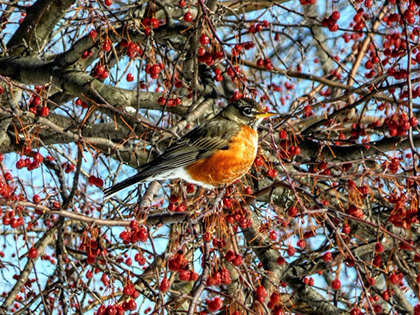
Winter Survival Strategies
Birds that remain through winter face harsh weather conditions and food scarcity, but manage to take advantage in habitats many other animals leave behind for warmer climates or a long sleep. So, how do they survive under conditions most animals avoid?
1.) Fluffed Feathers. Down feathers provide good insulation. When birds get cold, they fluff their feathers up, trapping air and body heat in the down layer surrounding their skin.
2.) Varied Diet. Many birds eat insects during the warmer months, stocking up on protein and fat. In the winter, birds that remain in colder climes will switch to a diet of fruits, nuts, and other long-lasting vegetation. They will even scavenge carcasses and road kill.
3.) Huddling. Birds, including those that that are territorial during nesting season, will huddle up for warmth during winter.
4.) Torpor. Like a more temporary version of hibernation, some birds go into a state of torpor, lowering their metabolism, body temperature and heart-rate to conserve heat and energy and cope with the cold, especially at night.
5.) Taking Shelter. Birds are smart and adaptable and will seek shelter in evergreens, bushes, under the eaves of homes, or in other shielded places during storms or extreme weather.
Nuisance Bird Problems During Winter
As many of you have noticed, most of our nuisance birds do not leave for the winter. Geese, gulls, and pigeons have adapted to staying in our urban areas throughout the coldest seasons, causing trouble wherever they go.
1.) Canada Geese. Many Canada geese migrate, heading south for the winter from their northern breeding grounds. However, our resident Canada geese, the giant subspecies that nests and is the main culprit associated with many nuisance issues, sticks around all winter, only moving as far from their regular territory as they need to find open water and food. Humans have made it easier, with bird feeders, hand feeding, crab-apple trees that hold onto their fruit longer, and aerators that keep waterways from freezing over.
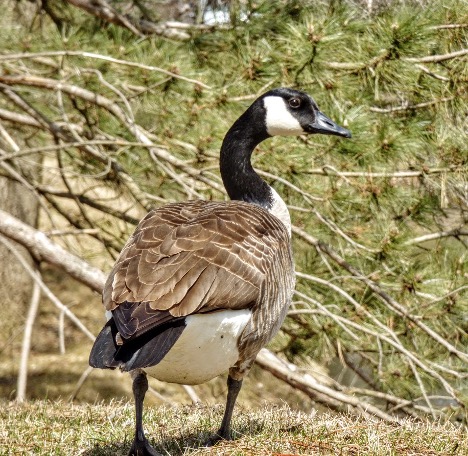
Especially during mild winters, resident giant Canada geese are likely to stay in the area all year long. Dormant grass, old crabapples and nuts, and handouts from humans provide ample sustenance.
2.) Gulls. Most gulls migrate. However, like Canada geese, the Great Lakes populations that cause most of the nuisance issues in our area will stick around all year, moving only as much as necessary to find food, water and a safe place to hang out. Gulls are skilled fliers and can cover large distances scouting for what they need without having to abandon their main territory. With cities providing warmer areas, open water, and a banquet of accessible trash, it’s no wonder they stay.
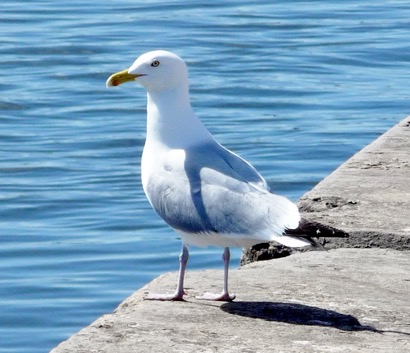
As long as there is open water, Ring-billed and Herring gulls like this one will stick around all year to eat your trash and make messes on your property!
3.) Pigeons. Pigeons are not native to our area, but evolved to live closely with people in a similar climate. Because they are so adaptable and use buildings as shelter, they easily survive the cold and snowy Midwest winter. If they can find a warm enough spot (like inside a warehouse with an open loading dock) and enough ready food (from trash or people feeding them), pigeons will breed year-round, raising chicks during the cold months.
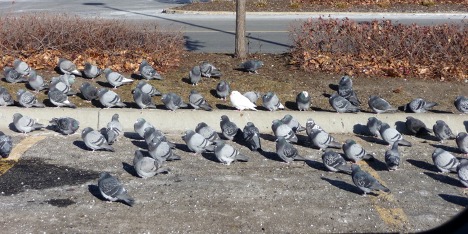
If fed by humans, intentionally or not, pigeons will not only hang around all winter causing issues for property owners, but they can also breed and raise chicks.
With birds adapting to cause nuisance issues year-round, management needs to reflect that. Migratory Bird Management of Wisconsin is here all year long to help you keep your property clean, healthy, and nuisance bird free. We can also help you encourage non-nuisance species like cardinals and chickadees to visit your property to provide some lively cheer and color to brighten it up during the dreary months. Give us a call today!
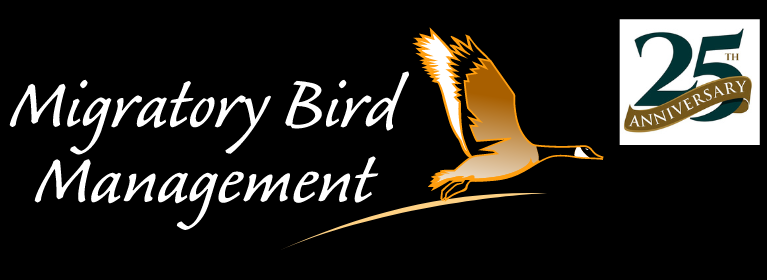



 0
0
